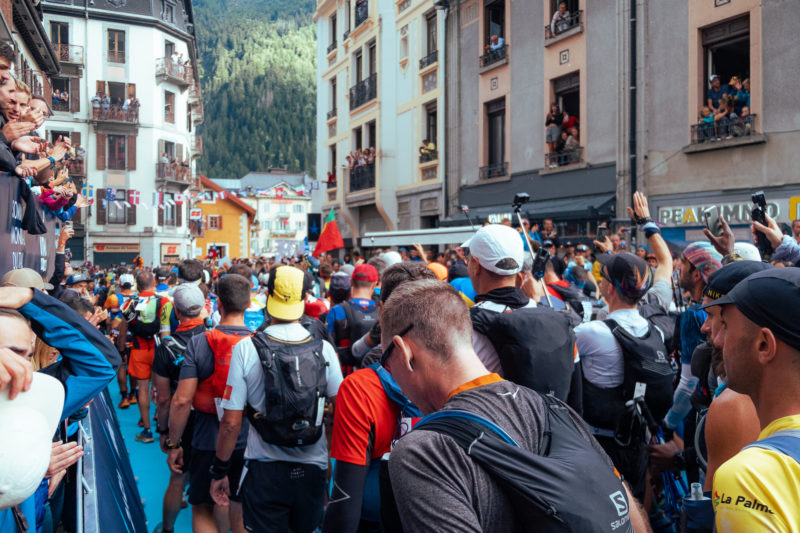
The time barriers of the UTMB® are an important factor to consider for trail runners embarking on the adventure around Mont Blanc. They are not there to discourage runners, but to ensure the safety, logistics, and smooth running of the event. Here is all the information on the deadlines to be respected.
Contents
What is a time barrier and why are they implemented?
A time barrier is a set time limit at a specific point on the course. If a runner arrives after the defined time, they are disqualified, even if they are still in good shape. These times are indicated for each refreshment point or strategic checkpoint.
They are put in place for several reasons:
- Runner’s Safety: to prevent a participant from being isolated at night or in degraded weather conditions.
- Volunteer mobilization: to limit the duration of teams’ presence in the field.
- Race flow: to ensure a good turnover between fast runners and those at the back of the pack.
- Maximum race time: the UTMB® allows up to 46h30 of race time on the main event. The barriers are aligned with this total time.
What are the UTMB® time barriers?
On the UTMB® (170 km / 10,000 m D+), the time barriers are spread throughout the UTMB course, based on technical difficulties, elevation gain, and refreshment points.
Each year, the Runner’s Guide provides the exact times for each edition, but here is a general idea of the time limits at some key points (based on a standard edition):
| Checkpoint | Km | Estimated time limit |
|---|---|---|
| Les Contamines | ~31 km | 6h30 of race time |
| Courmayeur | ~80 km | 21h of race time |
| Champex-Lac | ~124 km | 32h of race time |
| Vallorcine | ~153 km | 42h30 of race time |
| Finish Chamonix | 170 km | 46h30 of race time |
Important: it is the time of departure from the point that matters, not the arrival time. If you arrive just before the barrier, you must leave immediately.
How to anticipate the time barriers?
Choosing a realistic pace
Some trail runners prefer to have a bit of a margin to stress less during the race because of the time barriers.
However, be careful not to start too fast and avoid burning out. It’s better to aim for a regular effort management, especially up to Courmayeur. Feel free to use the Livetrail application to simulate your passing times.
Analysing the barriers by section
Divide your race into sections between refreshment points and check if you are ahead or close to the UTMB time limits. Load your UTMB GPX route onto your GPS watch. Anticipate not stopping for too long at some refreshment points, but take more time for the following ones.
For example, the first refreshment point at Saint-Gervais is more for water supply. You can spend more time at Les Contamines because you then go through the night in the wilderness until Courmayeur. At night, if you feel cold, don’t necessarily spend a long time at the refreshment points.
Take more time in Courmayeur, at almost mid-point, to recharge properly, as you can also have a drop bag with your belongings.
Training with long runs in real conditions
The best way to meet the UTMB time barriers is to train enough by accumulating elevation gain, managing technical descents well, and running regularly at night to train well and meet the deadlines. Also, anticipate the equipment if the weather is bad to avoid wasting too much time changing or using your gear.
Some official resources
To get the up-to-date times for the edition you will be running (there are sometimes changes to the course a few days before the race):
- The Runner’s Guide of the UTMB® (PDF available every year)
- The page of each race on the official UTMB® Mont-Blanc website
- The UTMB® live mobile app (updated time barriers, live tracking)
Respecting the UTMB® time barriers is a matter of training, strategy, and anticipation. If your goal is to finish the UTMB®, monitor your passing times, adjust your pace, stay clear on your fitness level, and above all… enjoy this unique adventure around Mont Blanc.